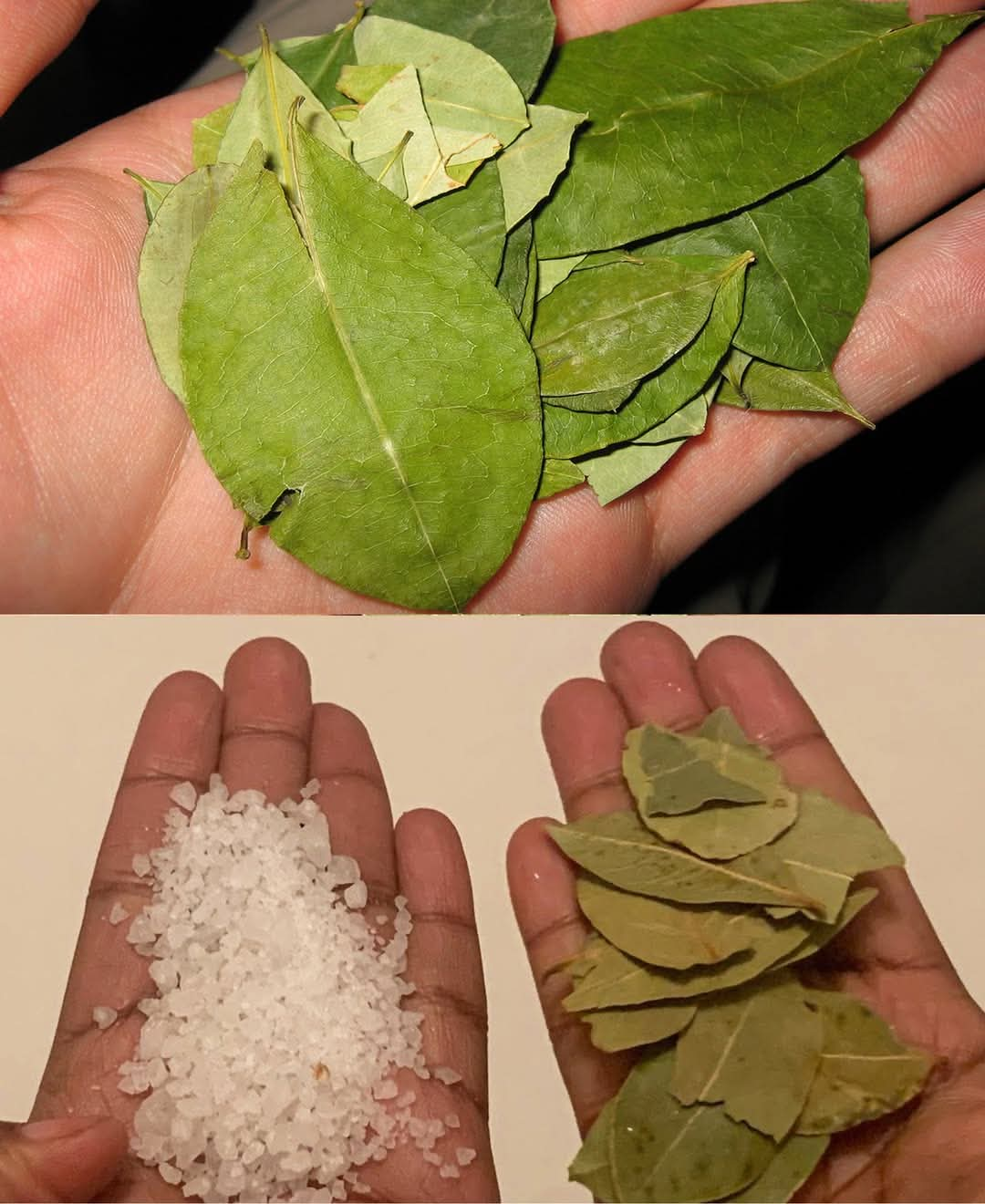ADVERTISEMENT
## The Magic Combination: Bay Leaves and Salt
The combination of bay leaves and salt is a simple but transformative culinary secret. Together, they elevate the natural flavors in dishes, create a deeper complexity in the food, and even serve as a powerful tool for preservation. My grandmother was the one who first taught me this combination, and I’ve since come to appreciate its versatility and ease. Here’s why the duo works so well:
### 1. **Flavor Amplification**
When combined with salt, the flavor of bay leaves becomes even more pronounced. The salt helps to extract and amplify the essential oils in the bay leaves, allowing their flavor to permeate the dish more effectively. Salt helps release the compounds in bay leaves, enhancing their natural aroma and allowing their herbal, earthy taste to shine through.
For example, when I make a hearty beef stew or a comforting chicken soup, I’ll often add a couple of bay leaves along with a pinch of salt. The result is a deeply flavored broth, rich in savory goodness. This subtle infusion of bay leaf flavor takes the dish from good to exceptional.
### 2. **Preserving Freshness**
Bay leaves and salt are both natural preservatives, which is another reason this combination is so powerful. Salt, as mentioned earlier, has long been used for curing and preserving food. When combined with bay leaves, the salt can help preserve the herb’s delicate essential oils, which might otherwise lose their potency over time.
My grandmother used to store bay leaves and salt together in small cloth bags to keep them fresh for months. She’d tuck these bags into cupboards or spice drawers to add a gentle fragrance to the air. The salt not only preserved the bay leaves, but it also infused the surroundings with a light, pleasant scent. She would even use these bags in the pantry to keep insects at bay, a natural and fragrant alternative to chemical repellents.
### 3. **Flavorful Salt Mixes and Seasoning Blends**
Another use my grandmother taught me was creating flavorful salt blends. Simply combining crushed bay leaves with salt creates a seasoning mix that can be sprinkled on anything from roasted vegetables to grilled meats. The process is straightforward: finely grind the bay leaves into the salt, and store the mixture in an airtight container. The longer the mixture sits, the more the flavors meld, resulting in an aromatic and unique seasoning.
This bay leaf-infused salt is perfect for seasoning a variety of dishes. My grandmother would use it to season her homemade bread dough or add it to her signature roasted potatoes. The result was a wonderfully fragrant, savory flavor that had depth and complexity without being overpowering.
### 4. **Aromatic Cooking and Storage**
Bay leaves, when combined with salt, also create a delightful aroma in the kitchen or home. As a child, I’d often find my grandmother cooking dinner, with the air thick with the warm, herbal scent of bay leaves simmering with salt. The smell would fill the house, inviting everyone to the table for a meal.
In addition to using the combination in cooking, my grandmother would also place a small dish of bay leaves and salt in various parts of the house. This would create a natural, refreshing fragrance that wasn’t too overpowering, unlike artificial air fresheners. The fragrance would linger and calm the senses, making it feel like home.
### 5. **Practical Household Uses**
Aside from its culinary benefits, bay leaves and salt have other practical applications. As I mentioned earlier, my grandmother would use small bags of bay leaves and salt to deter insects, particularly moths and ants, from invading her pantry. The combination of salt and bay leaves can be placed in drawers or shelves to act as a natural repellent, protecting your food items without the use of chemicals.
Salt, as we know, is also an excellent cleaning agent. My grandmother would sometimes sprinkle salt over cutting boards and countertops before scrubbing them down. The addition of crushed bay leaves would leave a light, refreshing fragrance and help to remove any lingering smells of onions, garlic, or fish. This combination could be used to clean pots and pans, too, with the added benefit of giving a subtle herbal aroma to the kitchen.
## Conclusion: Why Bay Leaves and Salt are Worth Their Weight in Gold
Bay leaves and salt, though simple ingredients, are more than just culinary tools. They have a rich history in both cooking and practical household applications, and their combination is a time-honored secret passed down from generation to generation. My grandmother taught me to use them not only to enhance the flavors of my cooking but also to preserve, protect, and enrich the environment around me.
From flavoring dishes to creating aromatic salt blends and even keeping insects at bay, this powerful combination is truly worth its weight in gold. So the next time you reach for the salt shaker or grab a bay leaf, remember the magic that happens when these two ingredients come together. They may be humble in nature, but they have a wealth of potential to elevate your cooking and your life in ways you may not have imagined.
